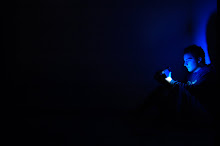Well, it's that time of year again and I'll do my best to sum up my experiences with my Media in the Digital Age class over the course of this spring. Going into the class, I knew I was probably going to know a lot of the things being discussed. I had the benefit of film, media, and technology classes throughout primary and secondary school. That said I am well aware that this is not the case for everyone working their way through FILMP 150.
Because of this, it was mostly refreshing past material for me as I worked my way through the semester. I didn't mind; I think it's always good to reacquaint yourself with old skills as often as possible to keep them sharp. Web design and HTML never seem to stick completely in my brain, so I need to continuously work at it in order to remember it. That was something this course definitely helped with.
From an evaluative perspective, I think this course does a good job of brushing over the broad strokes of what is going to be required of workers in the film and media industries these days. Most of the basics of just about every field within these two concentrations were covered to give students a taste of what they could expect. We didn't get to go into too great of detail on anything, but that wasn't the point of the class. We can always take a more focused course later.
One of the great benefits of attending a school in this city is that we have the local resources to work from. One of the highlights I can take away from this class was visiting the Museum of the Moving Image. Being only a subway ride away tempts me to go back for a more extended look.
